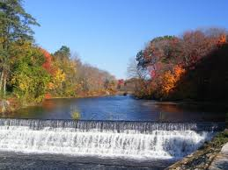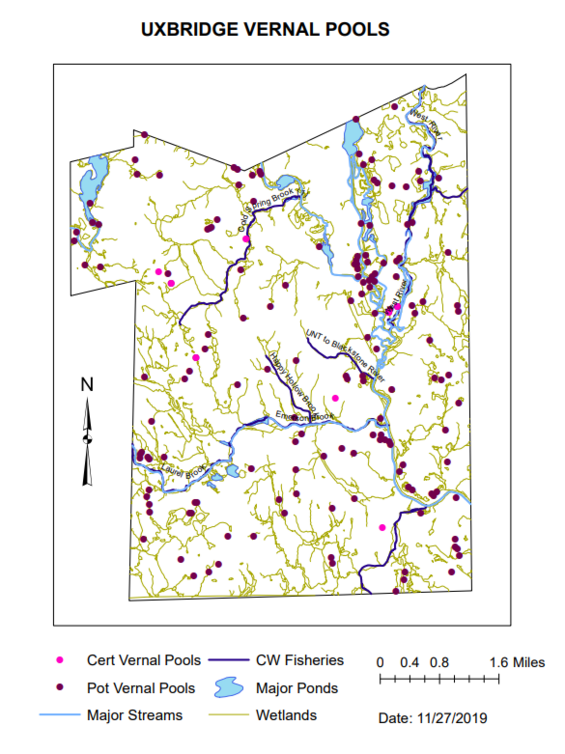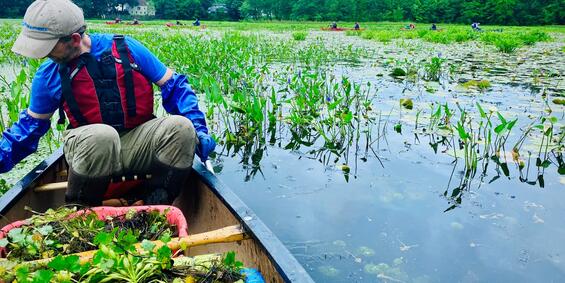Overview
Uxbridge is a town in Worcester County, Massachusetts, in the central part of the state. They have a population of 14,526 people and an area of 29.6 square miles. Climate hazards present in Uxbridge include inland flooding, severe winter storms, drought, wildfires, and other severe weather.
Core Team
The MVP 2.0 Core team is a group of municipal staff and Community Liaisons who work together to identify local climate resilience priorities and implement a project that supports those priorities.
Uxbridge's Community Liaisons include:
- Native Populations
- Youth
- Low-income residents
- Transportation disadvantaged residents
Community Resilience Priorities
Community resilience priorities are practical actions created during the MVP 2.0 Planning Grant process. They were shaped through community input, thoughtful discussion about changing local needs, and feedback from Environmental Justice groups and other community members.
Uxbridge, in partnership with their Core Team, identified the following priorities through the MVP 2.0 process.
| Priorities | Potential Actions | ||
|---|---|---|---|
| Priority 1: Improve Waterways and Flood Management. | Potential Actions:
| ||
| Priority 2: Enhance the overall accessibility of the internet amongst the vulnerable populations, especially amongst the older populations, the youth and those who cannot afford personal computers and internet bills. | Potential Actions:
| ||
| Priority 3: Improve invasive species management | Potential Actions:
| ||
| Priority 4: Enhance community ability to withstand extreme heat and drought events. Reduce the impact on vulnerable groups. | Potential Actions:
| ||
| Priority 5: Enhance community awareness and assist them to prepare for extreme events/ climate change through capacity building. | Potential Actions:
| ||
| Priority 6: Enhance regional emergency preparedness and develop an emergency preparedness plan with communication strategies and evacuation routes. | Potential Actions: To be determined. | ||
| Priority 7: Acquire land to convert pavement to greenspace to enhance riverfront buffers. | Potential Actions: To be determined. | ||
| Priority 8: Update regulations to consider climate change impacts. | Potential Actions:
| ||
| Priority 9: Develop and implement a shelter plan in case of an emergency. | Potential Actions: To be determined. | ||
Uxbridge's MVP 2.0 Seed Project: Pocket Forest
Uxbridge received funding to implement a Seed Project that addresses one or more of their climate resilience priorities.
Uxbridge will be creating a pocket forest for habitat restoration, improve stormwater absorption, and engage the community. This forest will be designed to support pollinators, reduce the presence of invasive species, and enhance ecological resilience. The pocket forest will also provide opportunity for educational programming, environmental stewardship, gathering and recreation, as well as serve as a cooling hub.
The activities of this project include:
- Assess feasibility of identified project site through review of land ownership and zoning, environmental and engineering assessments, regulatory and permitting compliance and determination of alignment with municipal priorities and community needs.
- Modification of public space through installation of native plants.
- Sustainment of community involvement through kick off events, partnership with schools, youth groups and seniors.
Uxbridge's Action Grant Projects
The MVP Action Grant provides funding to communities that want to take important steps to prepare for climate change, such as dealing with extreme weather, flooding, rising sea levels, and extreme heat.
Integrated Water Infrastructure Vulnerability Assessment and Climate Resiliency Plan (FY19)
Uxbridge conducted an Integrated Water Infrastructure Vulnerability Assessment and Climate Resiliency Plan. The project addressed water infrastructure and included a review of local bylaws with consideration for green infrastructure and nature-based solutions, and a robust public outreach and education program.

Integrated Vector-borne Disease Control Program (FY20)
The Town of Uxbridge developed an integrated vector-borne disease management plan. This included (1) a tailored, biological-based and regional approach to mosquito control, (2) replacing highly degraded priority culverts, and (3) strengthening the emergency communications plans and systems in order to reach all members of the community.

Home Brew Dam and Whitin Pond Dam Removal (FY23)
This project conducted field investigations, design, and permitting for removal of the Home Brew Dam. It also initiated community conversations, visioning processes, and key data collection to explore the possibility of removing the Whitin Pond Dam, which was abandoned and unmaintained. Removing these two dams would ultimately have multiple benefits, including reducing the risk of upstream flooding or downstream impacts from a catastrophic failure, reducing specific risks to the downstream low-income housing complex and the Town's well infrastructure, and also simultaneously restoring natural floodplain and wetland or riparian habitats in the existing impoundments that will help to buffer large storm events and provide additional resilience.

Home Brew Dam Removal and Community Engagement (FY26)
This project will complete bidding and implementation for removal of the Home Brew Dam, which is owned and operated by the Town of Uxbridge. The project will be used as a learning laboratory opportunity for the Town and other communities to document and showcase the process of dam removal and river/stream restoration as a means of launching a larger conversation about what dam removal entails, what the process looks like on the ground, and how an ecosystem recovers post-removal. The project will alleviate risks associated with upstream flooding of the Town's public water supply well infrastructure, and also alleviate the risk of downstream impacts from a catastrophic failure should the unsafe dam collapse. The restoration features a unique adaptive management approach for a light touch on the landscape and decreased implementation costs, while allowing for necessary adaptations to protect infrastructure as the stream finds its own course and reestablishes a stable channel after dam removal. The restored floodplain and wetland or riparian habitats in the existing impoundment will help to buffer large storm events and provide additional resilience in the future. The project also restores passage from the West River (a coldwater fishery) to Meadow Brook and upstream tributary streams.








